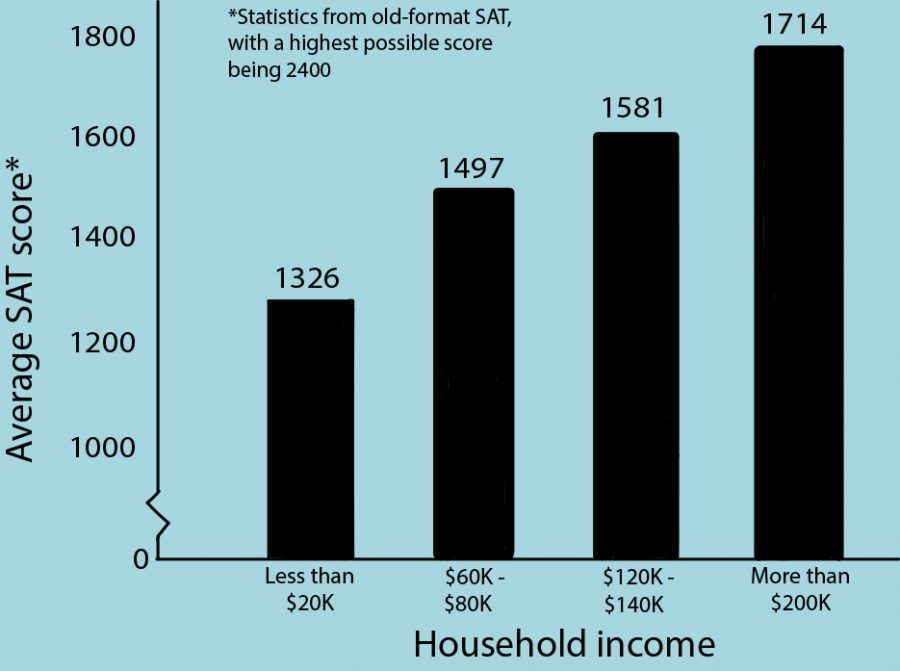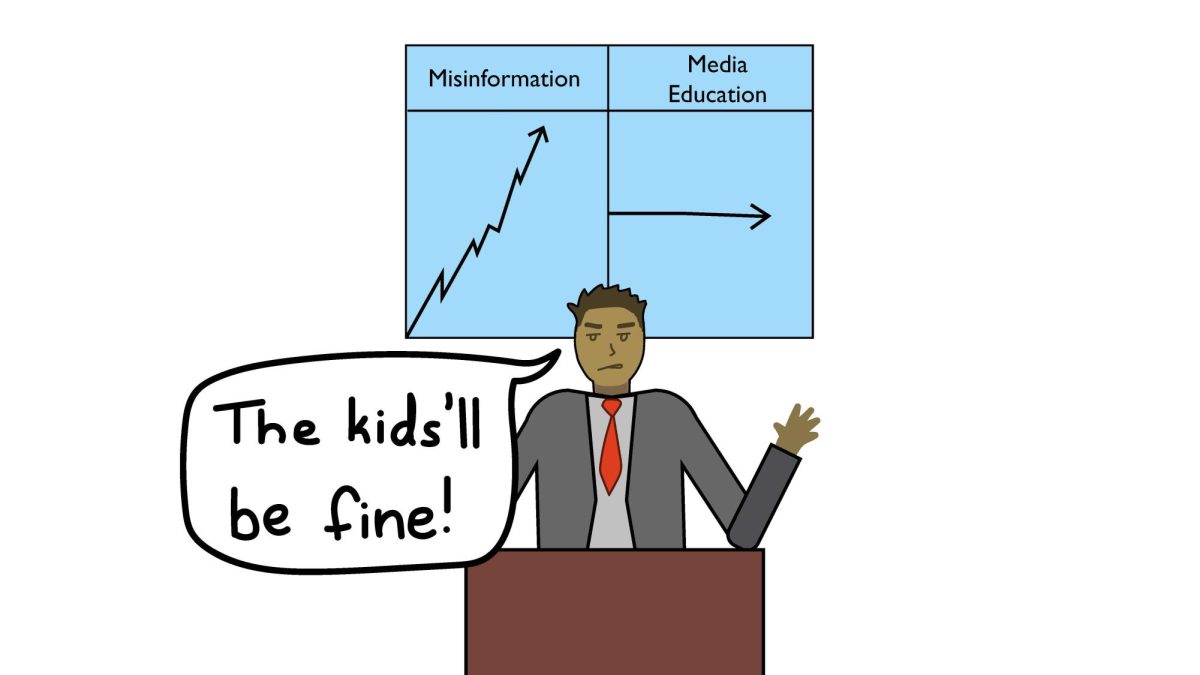From the SAT to Common Core tests, standardized assessments have been used to measure student achievement for years. However, these tests measure student success in a very specific and limiting way, and they often do not provide an accurate reflection of a student’s achievements. With these tests, students’ futures are determined by a process that does not provide a complete picture of their strengths and weaknesses. For many students, this system causes a large amount of unnecessary stress and places them in difficult situations. Instead, schools should convert to systems that assess students holistically, taking a variety of factors such as socioeconomic brackets, work experience and extracurricular activities into consideration.

Calculator referencing the necessities of standardized testing. Art by Eli Shafer
Current evaluations do not take into account a student’s socioeconomic background, which can prevent a child from obtaining the education and resources needed to succeed. In a 2012 study from the University of Minnesota, it was found that a student’s socioeconomic bracket and SAT scores were positively correlated. A large reason for this is the existence of preparatory courses and supplemental materials for the test, which many private companies offer for a cost. More affluent families often invest in these materials for their students, which can greatly help them in preparing for the test. However, the cost of these classes and materials is often too high to afford for those with a lower disposable income, limiting the opportunities available to students coming from less affluent backgrounds.
Additionally, many students coming from families of lower socioeconomic brackets live in areas that are also lower on the socioeconomic scale. Since these areas have less money available from taxes, schools and programs to help students learn aren’t nearly as well funded as they are in high-income neighborhoods. This often causes students to lose out on well-funded school systems with good facilities that attract competitive, experienced teachers, causing their test scores and academic performance to suffer. This gives an extremely unfair advantage to students based purely on where they live.
While it’s true many colleges have acknowledged this problem and are taking steps to solve it, the solutions they’ve implemented just create new problems. Instead of judging students on an individual basis, colleges use affirmative action to attempt to even out the disparities in students’ test scores, grades and more. Over the years, however, affirmative action has moved from a well-intended set of policies to a flawed solution that does more harm than good.
Just this year, a lawsuit against Harvard University found that Asian-American students were disproportionately given lower personal scores on their applications than other races, but no action was taken against the university, in part because of affirmative action laws that defend situations like this. Additionally, colleges are finding that admitting students for their race instead of their academic readiness hurts both the school and the student. According to a study conducted by the Public Policy Institute of California, students at the University of California at San Diego who were admitted under affirmative action programs had an average GPA that was 0.3 points lower than students admitted through the standard application process. Graduation rates also suffered: only 57% of these students graduated, compared to 73% of regularly-admitted students.
Furthermore, students often have different strengths that won’t necessarily be measured by traditional means of standardized testing. For example, most standardized tests measure skills solely in the categories of math and English. However, a student may be more focused in areas such as art or music, two of the many subjects that are disregarded by these assessments. Determining a student’s future based on only two fields of study makes students skilled in these subjects appear disproportionately talented. Meanwhile, students with strengths in other areas are often looked down upon for their inability to score well.
Standardized test scores are not an accurate measurement of students’ current abilities and should be replaced with a system that takes into account each individual’s personal strengths and weaknesses. By implementing a more holistic application process and giving less attention to the results of tests that favor some students over others, colleges would find that students are less stressed and able to rise to their full potential in a school that fits them.























